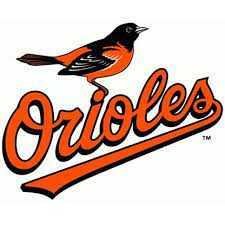In the annals of baseball lore, few franchises have embodied resilience and tenacity like the Baltimore Orioles. Their story traces back to 1901 when they took flight as one of the eight charter members of the American League, originally named the Milwaukee Brewers. However, in 1902, they migrated eastward to St. Louis and became the Browns.
It wasn't until 1954 that the Orioles, sporting their iconic black and orange colors, finally made their nest in Baltimore. Memorial Stadium became their home, and it set the stage for a remarkable journey through baseball's history.
Milestones began to grace the Orioles' path, and their arrival in Baltimore marked the start of an era of sustained excellence. Under the guidance of legendary manager Earl Weaver, the Orioles soared to new heights, earning the moniker "The Oriole Way" for their emphasis on strong fundamentals and sound player development.
In the 1960s and early 1970s, the Orioles fielded rosters adorned with future Hall of Famers and fan-favorites. The likes of Brooks Robinson, "The Human Vacuum Cleaner" at third base, and Frank Robinson, the first African-American manager in MLB history and a Triple Crown winner in 1966, etched their names into the hearts of Orioles fans.
The early '70s witnessed another golden chapter as the Orioles claimed six American League East division titles in the span of eight years. Among their stars was Jim Palmer, an elegant pitcher with a blazing fastball and impeccable control, earning three Cy Young Awards in his illustrious career.
But it was 1983 that brought ultimate glory to Baltimore. Under the leadership of Manager Joe Altobelli, the Orioles secured their last World Series title. Cal Ripken Jr., the Iron Man, etched his legacy during this era, captivating fans with his record-breaking consecutive games streak and remarkable play at shortstop.
However, like all teams, the Orioles faced their share of turbulent seasons. But through the highs and lows, the bond between the Orioles and their fans remained unwavering. Camden Yards, the team's new stadium, opened its gates in 1992 and revitalized baseball in Baltimore. The retro-modern ballpark, the first of its kind, became an instant fan-favorite, setting a new trend in stadium design across the league.
Throughout the late '90s and early 2000s, names like Cal Ripken Jr., Eddie Murray, and Mike Mussina carried the torch, symbolizing the resilience of the Orioles' spirit. Despite facing challenges, their fans remained loyal, known for their unwavering support and passionate enthusiasm at every home game.
The Orioles have weathered storms and embraced triumphs, but the spirit of Baltimore perseveres. Their history serves as a testament to the unyielding nature of baseball itself—a sport that reflects the essence of life with its unpredictable highs and lows.
Today, a new generation of players dons the black and orange, representing the Orioles with pride. As they continue to build upon their legacy in a constantly evolving league, they carry the hopes and dreams of a storied franchise and a devoted fan base.
The Baltimore Orioles' journey through baseball history is a tale of heart, grit, and camaraderie, bound together by a passion for the game and an unbreakable bond between team and city. As long as baseball's flight continues, the Orioles will remain an enduring symbol of Baltimore's spirit and a legacy that will forever soar.
This report was published via Actifit app (Android | iOS). Check out the original version here on actifit.io







